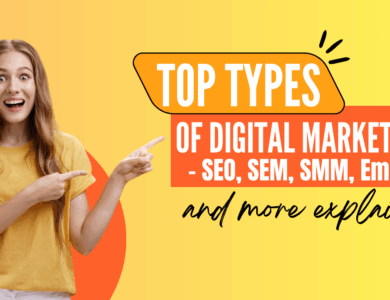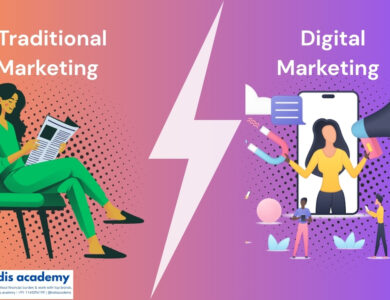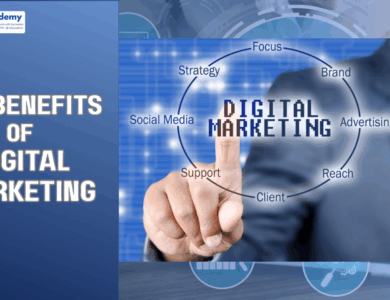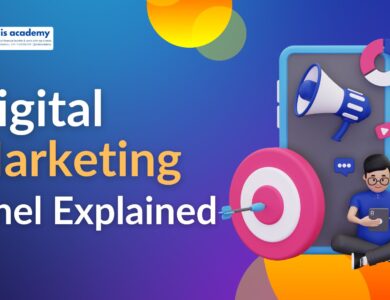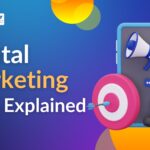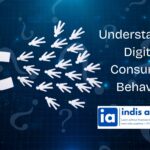Top Digital Marketing Trends of 2025: AI, Automation & What’s Next

Top Digital Marketing Trends of 2025: AI, Automation & What’s Next
As we step deeper into 2025, the digital marketing landscape is evolving faster than ever. What worked last year might already be outdated, and brands that don’t adapt risk falling behind. With consumer behavior changing rapidly and technology reshaping how we connect, advertise, and sell — one thing is clear: digital marketing is no longer just a channel; it’s a living ecosystem.
From artificial intelligence and automation to voice search and hyper-personalized experiences, here’s a look at the top digital marketing trends of 2025 that are already shaping strategies worldwide.
1. AI-Powered Everything: The New Digital Brain
Artificial Intelligence (AI) is no longer optional — it’s foundational.
From AI-generated content to automated campaign management and predictive analytics, smart algorithms are helping marketers work faster, cheaper, and smarter.
Key examples:
- ChatGPT-style content assistants are writing blog posts, product descriptions, and even emails.
- AI tools like Jasper, Copy.ai, and Writesonic are helping scale content operations.
- Predictive analytics in platforms like Salesforce and HubSpot help forecast buying behavior.
Why it matters:
AI minimizes guesswork and maximizes efficiency. It empowers even small businesses to compete at scale with real-time insights and automation.
2. Hyper-Personalization at Scale
Forget using just a name in your email. In 2025, personalization means showing the right product, at the right time, on the right device — based on real-time behavior and data.
Trending tactics:
- Dynamic landing pages that adjust content based on user history
- Real-time product recommendations
- Personalized video messages via tools like Vidyard
Stat to know:
Brands using advanced personalization see up to 40% higher conversion rates.
Takeaway:
Consumers don’t just want personalization — they expect it. Use first-party data and smart segmentation to deliver customized experiences that feel intuitive.
3. Voice Search Optimization
“Hey Google, where’s the nearest vegan cafe?”
Voice search is now a staple in how people discover information, products, and services — especially on mobile and smart home devices.
Optimizing for voice means:
- Focusing on long-tail conversational keywords
- Creating FAQ-style content that answers direct questions
- Ensuring your Google Business Profile is up-to-date
Bonus tip:
Structure your content to be easily read aloud by smart assistants.
Why it matters:
Over 50% of consumers use voice assistants daily. Ignoring this channel means missing out on high-intent traffic.
4. Zero & First-Party Data Reigns Supreme
With privacy laws tightening (GDPR, CCPA, etc.) and third-party cookies vanishing, marketers are shifting to zero and first-party data.
What’s what?
- Zero-party data: Info users voluntarily provide (quizzes, preferences)
- First-party data: Behavior collected from your site/apps (purchases, clicks)
Why it matters:
These data types are more reliable, privacy-compliant, and help drive better personalization.
Smart move:
Use interactive tools like quizzes, chatbots, and gated content to collect zero-party data at scale.
5. Conversational Marketing & Chatbots Evolve
Modern buyers want instant answers — not lead forms.
What’s trending:
- Advanced chatbots powered by AI and NLP (natural language processing)
- WhatsApp Business and Facebook Messenger automations
- Live chat integrations with CRMs
Impact:
- Boosts lead qualification speed
- Enhances user experience
- Converts more visitors into customers with real-time engagement
Fact: 90% of customers expect immediate responses. Conversational commerce is the new storefront.
6. Video Continues to Dominate (Especially Short-Form)
Short-form video isn’t just a Gen Z trend — it’s now the most engaging content format across age groups.
Hot platforms in 2025:
- TikTok (still growing)
- Instagram Reels
- YouTube Shorts
- LinkedIn Video (for B2B storytelling)
Emerging strategy:
- Vertical-first storytelling
- UGC-style branded videos
- Micro-influencer video collaborations
Tip: Use AI tools to repurpose long-form video into shorts and reels automatically.
7. Influencer Marketing Gets Smarter & More Measurable
Influencer marketing is moving beyond “likes” and vanity metrics. In 2025, it’s all about performance-based partnerships and authentic micro-influencers.
Key shifts:
- UTM tracking for influencer campaigns
- Affiliate-style payouts tied to conversions
- Niche creators with small but loyal communities
Why this matters:
Consumers trust people more than brands. Authenticity wins — and small influencers often outperform celebrities in ROI.
8. Augmented Reality (AR) & Virtual Try-Ons Go Mainstream
AR is no longer experimental — it’s expected.
Examples in use:
- Eyeglass try-ons (Warby Parker)
- Furniture placement in your home (IKEA)
- Virtual makeup testing (Sephora)
Why now?
As shopping becomes more immersive, brands that enable “try before you buy” win customer trust and reduce returns.
Action step: Integrate AR into product pages or mobile apps if you sell physical goods.
9. Ethical & Sustainable Marketing Takes Center Stage
Modern consumers want to align with brands that reflect their values. In 2025, purpose-driven marketing is no longer optional.
What to include in your strategy:
- Transparent supply chain communication
- Eco-friendly packaging
- Social responsibility campaigns
Stat to note:
73% of Gen Z consumers are more likely to support a brand that takes a stand on social issues.
Tip: Don’t fake it. Consumers spot inauthenticity fast.
10. Human-Centered Content in an AI World
Ironically, as AI creates more content, human-centered content stands out more.
Winning content in 2025 is:
- Emotionally resonant
- Deeply researched
- Story-driven
Tactic: Use AI for speed — but inject human insight, tone, and empathy to truly connect.
Balance is key: Think of AI as your assistant, not your voice.
Also Read:
- Marketing Metrics That Matter: The KPIs You Can’t Afford to Ignore
- B2B vs B2C Digital Marketing – Key Strategy Differences Explained
- Omnichannel Marketing Strategy: Integrated User Journey
Conclusion: Adapt Fast or Fade Out
The future of digital marketing is intelligent, fast, ethical, and deeply personalized. From AI and voice search to sustainability and AR, the landscape is changing — and so must your strategies.
To thrive in 2025 and beyond:
- Stay ahead of the trends
- Double down on personalization and automation
- Keep your messaging human
Because while tools and tactics may change, one truth remains: marketing is still about people, and understanding how to reach them better than ever.
